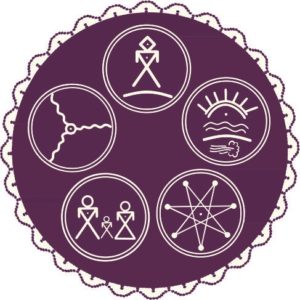About the Anishinabek Nation Governance Agreement
ANISHINABEK NATION GOVERNANCE AGREEMENT

On April 6, 2022, the Government of Canada and five Anishinabek First Nations signed the Anishinabek Nation Governance Agreement. The Anishinabek Nation Governance Agreement is another important step out from under the Indian Act toward greater self-determination for the First Nations that ratify the Agreement. The Anishinabek Nation Governance Agreement sets out a process for other Anishinabek First Nations to join the Anishinabek Nation Governance Agreement in the future should they choose to do so.
The Agreement: An Overview
For nearly 25 years, the Anishinabek Nation and the Government of Canada negotiated the Anishinabek Nation Governance Agreement that will recognize, not create, the Anishinabek First Nations’ law-making powers and authority to self-govern, thus removing them from four (4) fundamental governance provisions of the Indian Act.
The First Nations that ratify the Anishinabek Nation Governance Agreement will be removed from the following four (4) provisions of the Indian Act:
- Leadership selection
- Citizenship
- Language and culture
- Operation of government
Under the Agreement, certain provisions of the Indian Act that deal with governance will no longer apply to the signatory First Nations. They will pass their own laws on how they select their Chiefs and Councils; determine who their citizens are without interference from external governments; create laws dedicated to the restoration and preservation of their language and culture; and manage their First Nation government operations.
The signatory First Nations also create the collective Anishinabek Nation Government. This body of government will support the signatory First Nations in the four areas of governance and be recognized formally by the Government of Canada. An Intergovernmental Forum will be established. This new government-to-government relationship between the Anishinabek Nation Government, signatory First Nations, and Canada will facilitate the process to address issues and priorities of importance to the Anishinabek First Nations and their citizens.
The Path to Self-Government
Negotiations between Canada and the Anishinabek Nation began in 1995. In 2002, the parties reached a non- binding Agreement-in-Principle that set out the key elements for potential inclusion in the Final Agreement. Formal negotiations were completed in 2019, allowing Anishinabek First Nations to ratify the Final Agreement with voting citizens. Five Anishinabek First Nations successfully ratified the Anishinabek Nation Governance Agreement, which led to the signing of the Anishinabek Nation Governance Agreement.
Throughout the negotiations, the Anishinabek Nation and ratifying First Nations undertook extensive consultations and information sharing with First Nations citizens and leadership. Capacity-building conferences, workshops, and practical training were conducted in support of the anticipated ratification of the Agreement.
The Anishinabek Nation Governance Agreement includes the complementary Anishinabek Nation Fiscal Agreement that outlines the funding for governance-related functions. The Anishinabek Nation Governance and Fiscal Agreements will not take away from any inherent Aboriginal or treaty rights from Anishinabek citizens.
Bill S-10: Anishinabek Nation Governance Agreement Act underwent Canada’s Legislative process, having passed both the Senate and House of Commons in identical form, and receiving Royal Assent by written declaration in order to make the bill a law on June 23, 2022. Bill S-10 is now an Act of Parliament and Chapter 9 in the Statutes of Canada 2022.
Next Steps
Effective date of the Anishinabek Nation Governance Agreement is October 1, 2022.
The central governing body, B’Maakonigan, will be the Anishinabek Nation Government, comprised of the signatory First Nations, and will support the communities. The name selected under the guidance of Elders and Anishinabek Nation Councils, loosely translates to “That which guides/supports/encourages.”


